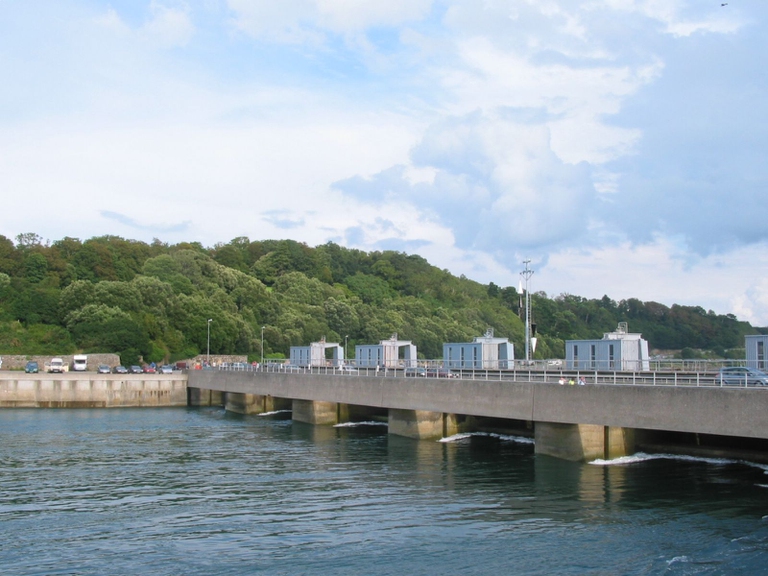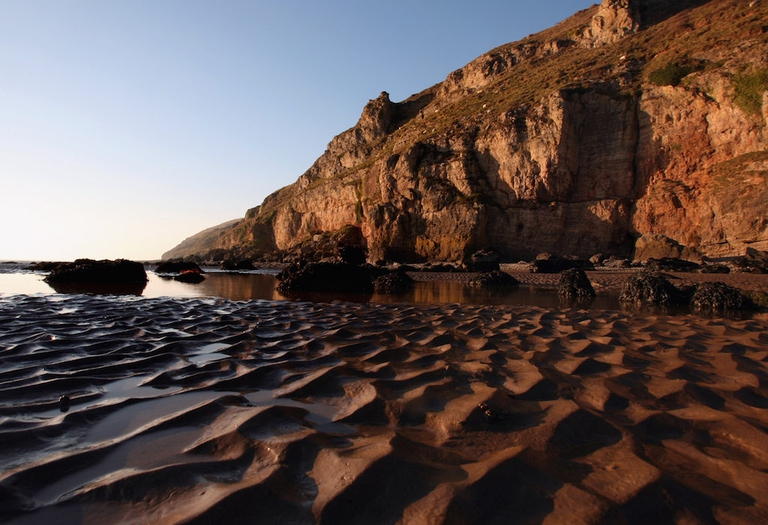
A group of experts in Tokyo suggested pouring radioactive water from Fukushima into the open sea. A marine biochemist explains the consequences of this absurd decision.
The largest tidal power plant in the world will be built in the Larantuka Straits. It will serve 100,000 people and help overcome some of the challenges of energy provision in Indonesia.
The largest tidal power plant in the world will be built in the Larantuka Straits in the island of Flores, eastern Indonesia: it will provide energy for at least 100,000 people. Indonesia is an archipelago of more than 17,500 islands, with nearly 260 million people occupying less than half of these, which means that building efficient energy provision infrastructure is a challenge, particularly in the eastern part, where the islands are small (except for Papua) and spread over a wide area. Whilst the country relies mostly on coal, as it has significant reserves of this dirty fuel that can be extracted and processed at a low cost, about 20 million people remained without electricity in 2017. In addition, it has significant unutilised renewable energy potential, including a total of 60 gigawatts from tidal waves.
As has been widely demonstrated, the use of fossil fuels is ridden with serious problems, including increasing costs, depleting resources and the negative impact of coal-based plants on surrounding communities and the environment. Also, it puts Indonesia among the biggest contributors to climate change.
Its government has made a commitment to increasing the share of renewable energy in national energy provision, from the current level of a little under 8 per cent to almost a quarter by 2025 (through government regulation 79/2014). This will be aligned with international climate change mitigation efforts, with the country stating it will voluntarily reduce emissions by around a third by 2030. About 314 million tonnes of CO2 are expected to be cut from the energy sector.
Renewable energy is actually an effective solution for an extensive archipelago such as Indonesia, as small islands and remote areas are mostly not connected to the electricity grid. Stretching the grid to these from the nearest major islands is also too costly and has been proven to be ineffective. Instead, renewable energy can be harvested directly on small and remote islands.
The Larantuka Straits project will begin with the construction of the Pancasila-Palmerah Bridge that will function as a barrage (dam) where state-of-the-art turbines turbines will be installed to transform the kinetic energy of tides’ rise and fall of the tides into electricity. As simple as that. The construction, which should be complete by 2020, is integrated with other development projects that will represent an economic boost for more than 250,000 people, as well as a concrete contribution to mitigating climate change.
Following completion of a feasibility study that included an environmental impact assessment, the government formed a consortium to run the project. According to Strukton International, one of the companies responsible for cosntructing the tidal bridge, it is estimated that the first phase of the project will absorb 200 million dollars in investments and will have an installed capacity of 18 to 23 megawatts, though tidal power in the area has a potential of 300 megawatts. The following stage will see the extension of the power plant to a capacity of 90 to 115 megawatts, backed by another 350 million dollars in investments. By then it is expected that the structure could provide energy for about half a million people.
The project is doubly aimed at establishing reliable energy provision and boosting local infrastructure, states Luhut Pandjaitan, Coordinating Minister for Political, Legal and Security Affairs. The 800-metre bridge will connect Adonara Island to the eastern tip of Flores, enabling economic activity to be opened up. It will also be integrated with a container hub as part of President Joko Widodo’s Sea Toll Programme to turn the country into a global maritime hub, as well as the extension of Gewayantana Airport’s runway.
Indonesia is one of the most thriving economies in the world, where growth is stable at about 5-6 per cent per year. Its huge population creates a large domestic market, where nearly 60 per cent of growth is fuelled by private consumption backed by a growing and affluent middle class. The government is aware that this positive trend can only last if the underpinning factor, which is infrastructure, is well-developed. Economic growth can only stand on adequate roads, ports, airport, railways, water provision structures and power plants, over all regions. And all these require energy. Joko Widodo’s administration has been working on a very ambitious infrastructure development programme. To support this, a fast-track policy has been launched to add 35,000 megawatts of new power by the end of its term in 2019, and the the Larantuka Straits tidal power plant will contribute to this objective.
Tidal energy is released by tidal movements as a result of the gravitational and centrifugal forces of the Earth, moon and sun, resulting in two high tides and two low ones for every landmass. These occur at regular times during the day, meaning that this form of energy is stable, periodic and predictable. This also differentiates them from oceanic currents, which are slow-moving and unpredictable.
Read more: Ocean tides will supply electricity to over 155,000 British families
Tidal energy involves the installation of clean infrastructure undersea and its efficiency is high. For example, compared to wind power, which applies similar technology, the output of tidal power is 80 per cent higher because water is much denser than wind. The highest tidal ranges, the difference between its low and high points, in the world include the Baie du Mont-Saint-Michel in France (13.5 metres), Severn Estuary in the UK (15 metres) and the Bay of Fundy in Canada (16 metres). The tidal range in Larantuka Straits has been evaluated to be adequate, meeting the required speed for energy production, therefore moving Indonesia in the right direction to fuel the growth of its booming economy whilst respecting the limits of the environment.
Siamo anche su WhatsApp. Segui il canale ufficiale LifeGate per restare aggiornata, aggiornato sulle ultime notizie e sulle nostre attività.
![]()
Quest'opera è distribuita con Licenza Creative Commons Attribuzione - Non commerciale - Non opere derivate 4.0 Internazionale.
A group of experts in Tokyo suggested pouring radioactive water from Fukushima into the open sea. A marine biochemist explains the consequences of this absurd decision.
A federal court in Washington, D.C. has struck down the Dakota Access Pipeline, following years of campaigning by the Standing Rock Sioux tribe.
The Scottish island of Eigg is self-sufficient for its energy needs, relying almost entirely on renewable sources, especially thanks to a coordinated community effort.
President Magufuli in unmovable in going ahead with the Stiegler’s Gorge dam despite conservationists’ warnings of the damage it will cause the Selous Game Reserve’s ecosystem and wildlife.
A large dam along the Luangwa River in Zambia would have posed a serious risk to local people and wildlife, leading hundreds of thousands to oppose it. A call to which the government responded by halting plans to build it.
The first one megawatt solar power plant in the Chernobyl exclusion zone has become operational. This is the first step in a renewable energy development project promoted by the Ukrainian government in the area.
A tanker exploded at a gas and petrol station in Nigeria’s Nasarawa state on the 10th of September, killing 35 people and leaving some burned beyond recognition; 3 citizens had several spine and brain injuries, 2 of them are still on Intesive Care Units. Fela Habila , a local singer, is now stable and out of danger but
Robben Island’s solar energy micro-grid project will produce almost one million kilowatt hours of electricity annually, significantly reducing the cost and impact of buying diesel.
The Balikpapan oil spill off the coast or Borneo in Indonesia covers 120 square kilometres. It has caused the death of 5 people, health and economic problems for local communities, as well as threatening wildlife and local ecosystems.










